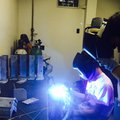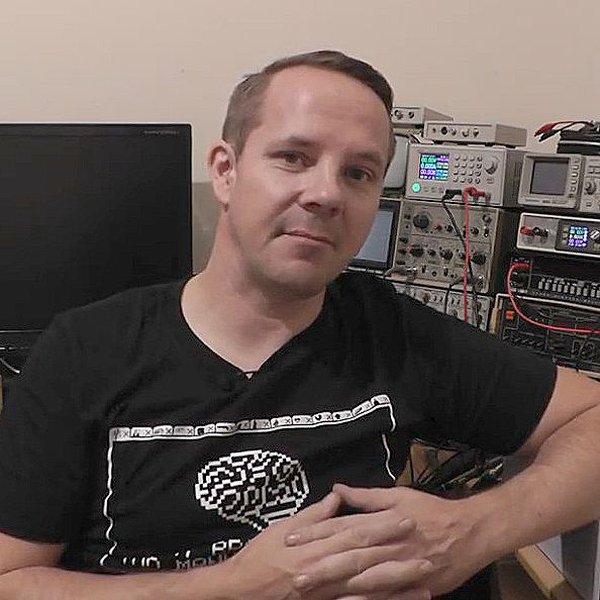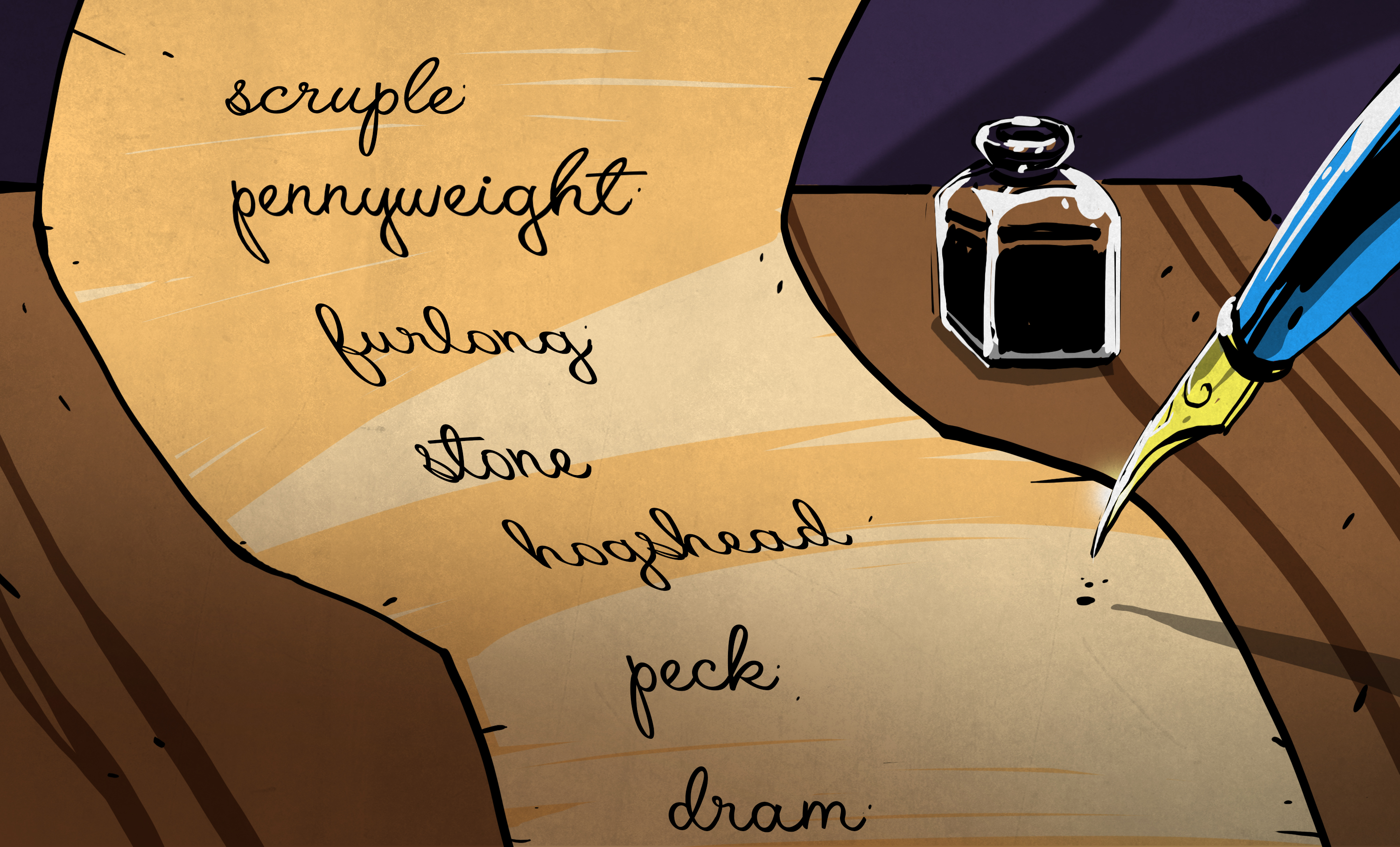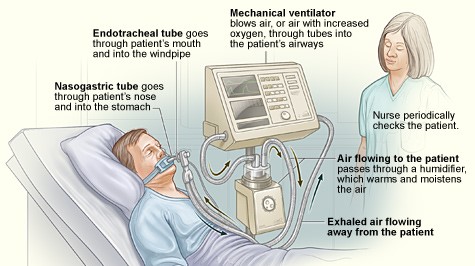-
Hack Chat Transcript, Part 1
09/30/2020 at 20:15 • 0 commentsHi everyone, welcome to Hack Chat. I'm Dan, I'll be moderating today for Adam Zeloof as we talk all about mechanical engineering. Is @Adam Zeloof logged in yet?
![]() I'm here!
I'm here!![]() There we go. Hi Adam, welcome to the chat. And welcome to the writing crew -- for those who don't know, Adam started writing for Hackaday this week.
There we go. Hi Adam, welcome to the chat. And welcome to the writing crew -- for those who don't know, Adam started writing for Hackaday this week.Can you kick us off with a little bit about your background, Adam?
![]() Thanks Dan!
Thanks Dan! Hi everybody, I'm Adam. I grew up in my family's machine shop, which probably had something to do with me deciding to go to Carnegie Mellon for school. After getting my bachelor's, I worked at SpaceX for a few months before returning to CMU for my master's. Now I'm a mechanical engineer at Boston Dynamics.
![]() I have a question for you: When I was doing my undergrad, it seemed like every ME student I knew was a gearhead as a teenager. Loved to play with cars. This was back in the muscle car era, mind you. Is it still kinda the same today, that gearheads go into ME to kind of validate and monetize their passion?
I have a question for you: When I was doing my undergrad, it seemed like every ME student I knew was a gearhead as a teenager. Loved to play with cars. This was back in the muscle car era, mind you. Is it still kinda the same today, that gearheads go into ME to kind of validate and monetize their passion?![]() That's pretty bang-on for me! I definitely knew a few other gearheads in school, but I would say most my my ME classmates came into college with fairly little hands-on expierence
That's pretty bang-on for me! I definitely knew a few other gearheads in school, but I would say most my my ME classmates came into college with fairly little hands-on expierence![]() They got lots of it in school, though!
They got lots of it in school, though!![]() I do remember a few classmates going into ME because of robotics competitions they were part of in high school, that was probably more common than car interests.
I do remember a few classmates going into ME because of robotics competitions they were part of in high school, that was probably more common than car interests.![]() Also, as I sort of alluded to in the event page for this, most of us just kind of guess at the structural aspects of our builds. I assume that's not where you as an an ME, but are there rules of thumb that non-MEs can use for deciding on things like which fasteners to use, etc?
Also, as I sort of alluded to in the event page for this, most of us just kind of guess at the structural aspects of our builds. I assume that's not where you as an an ME, but are there rules of thumb that non-MEs can use for deciding on things like which fasteners to use, etc?![]() Boston Dynamics - I'm so impressed by the stuff I see from there. What's it like working for them?
Boston Dynamics - I'm so impressed by the stuff I see from there. What's it like working for them?![]() Ha- I guess about things all the time! Most fasteners usually have a load rating that you can check on, and a good guess for the load it'll see is often sufficient. Aside from that, always good to make sure to have at least three threads of engagement, and watch out for incompatible metals!
Ha- I guess about things all the time! Most fasteners usually have a load rating that you can check on, and a good guess for the load it'll see is often sufficient. Aside from that, always good to make sure to have at least three threads of engagement, and watch out for incompatible metals!![]() You're writing for HaD now?! Congrats! That's dope
You're writing for HaD now?! Congrats! That's dope![]() Nyles- I love it there! Playing with robots is the best perk (when I can be in the office, at least)
Nyles- I love it there! Playing with robots is the best perk (when I can be in the office, at least)![]() Your parents owning a machine shop explains... quite a bit.
Your parents owning a machine shop explains... quite a bit.![]() Hey Alex! Thanks, Just wrote my first article the other day :)
Hey Alex! Thanks, Just wrote my first article the other day :)And oh yeah it does, I basically grew up there
![]() Early memories include banding random bits of metal, then covering them with packing stickers
Early memories include banding random bits of metal, then covering them with packing stickers![]() *bending
*bending![]() that makes a lot more sense.
that makes a lot more sense.![]() What is your actual day to day like at boston dynamics? Like, new project: how does your involvment start? Do mechanical designs start with sketching? sketching in CAD? Do you have some sort of industrial design to go on ahead of time and then your job is to make sure it can be manufactured and won't break in half, or what?
What is your actual day to day like at boston dynamics? Like, new project: how does your involvment start? Do mechanical designs start with sketching? sketching in CAD? Do you have some sort of industrial design to go on ahead of time and then your job is to make sure it can be manufactured and won't break in half, or what?![]() Oh @Dan Maloney - whenever I need to think about fasteners I take a look at this. Most useful tool on my desk:
Oh @Dan Maloney - whenever I need to think about fasteners I take a look at this. Most useful tool on my desk:http://www.engineeringslidechart.com/slidechart.htm
![]() Oh, sweet! Thanks!
Oh, sweet! Thanks!![]() Alex- probably shouldn't talk about that too much honestly. Will say I do lots of design and testing though.
Alex- probably shouldn't talk about that too much honestly. Will say I do lots of design and testing though.![]() And I break lots of stuff
And I break lots of stuff![]() Hey Adam,
Hey Adam,![]() Wish I could talk more about it, but I'm not here to represent the company, only myself!
Wish I could talk more about it, but I'm not here to represent the company, only myself!![]() How is working at boston dynamics after coming from spacex, the two highest tier ME jobs you can think of...
How is working at boston dynamics after coming from spacex, the two highest tier ME jobs you can think of...![]() I mean even from the perspective of other companies?
I mean even from the perspective of other companies?![]() I do quite a bit of "mechanical engineering," except from the standpoint of a prototyper who starts with wood and plastic and basically no analysis whatsoever
I do quite a bit of "mechanical engineering," except from the standpoint of a prototyper who starts with wood and plastic and basically no analysis whatsoever![]() Obviously "hack it together in the garage with what you've got on hand" and "hack it together in CAD with what you've got on hand" are pretty similar.
Obviously "hack it together in the garage with what you've got on hand" and "hack it together in CAD with what you've got on hand" are pretty similar.![]() Wood and plastic prototypes are fun! I can't tell you how often I hack together an idea in my garage before pouring more time into it
Wood and plastic prototypes are fun! I can't tell you how often I hack together an idea in my garage before pouring more time into it![]() I mean, prototyping in wood is valid, right. Cars are modeled in clay first, after all. Or at least they used to be - do they still do that?
I mean, prototyping in wood is valid, right. Cars are modeled in clay first, after all. Or at least they used to be - do they still do that?![]() CAD for personal projects can be useful but sometimes I find it's best to just sketch something up and try to build it
CAD for personal projects can be useful but sometimes I find it's best to just sketch something up and try to build it![]() I'm not sure Dan- I wouldnt be surprised though. I've seen some crazy VR sculpting used for car design but I feel like a clay model is a pretty nice way to start still
I'm not sure Dan- I wouldnt be surprised though. I've seen some crazy VR sculpting used for car design but I feel like a clay model is a pretty nice way to start still![]() Hi Adam,
Hi Adam,Thanks for the early info you sent for my quest to hire an ME consultant ... wonder if there's other sites besides Freelancers?
![]() Stress and thermal analysis can be useful tools but only when you actually need them. Often it's enough to say "If I make this beam super thick it won't break" when doing fun projects. Stress analysis and FEA are useful when you're trying to reduce weight or cost, which isn't always needed.
Stress and thermal analysis can be useful tools but only when you actually need them. Often it's enough to say "If I make this beam super thick it won't break" when doing fun projects. Stress analysis and FEA are useful when you're trying to reduce weight or cost, which isn't always needed.![]() But they're real useful tools when it is
But they're real useful tools when it is![]() Hey Sky- I don't know. I haven't really done much in the freelance/consulting department myself so I'm not sure what the best source would be
Hey Sky- I don't know. I haven't really done much in the freelance/consulting department myself so I'm not sure what the best source would be![]() This is a pretty decent overview of basic stress analysis: https://www.engineeringclicks.com/basic-stress-analysis-calculations/
This is a pretty decent overview of basic stress analysis: https://www.engineeringclicks.com/basic-stress-analysis-calculations/![]() Euler-Bernoulli beam bending equations have been derived to cover just about every case a beam can be constrained
Euler-Bernoulli beam bending equations have been derived to cover just about every case a beam can be constrained![]() Just forwarded the link to that slide chart to my wife - Christmas is coming. FYI, a transcript will be available afetr the chat in case anyone needs to refer back to links or anything.
Just forwarded the link to that slide chart to my wife - Christmas is coming. FYI, a transcript will be available afetr the chat in case anyone needs to refer back to links or anything.![]() I got one for my dad last Christmas!
I got one for my dad last Christmas!![]() Hot button question - do you work in metric for calculations like beam deflection, and then convert to Imperial/English/customary units? Seems like engineers in the US might have to be adept with both systems.
Hot button question - do you work in metric for calculations like beam deflection, and then convert to Imperial/English/customary units? Seems like engineers in the US might have to be adept with both systems.![]() Oof- a sore spot.
Oof- a sore spot.![]() Yeah, I figured
Yeah, I figured![]() Before I lose everybody's respect for bashing the Metric system, I will concede that it's great for science.
Before I lose everybody's respect for bashing the Metric system, I will concede that it's great for science.![]() Yes
Yes![]() And now that I'm thinking about it, I do probably do most engineering calculations in the metric system. Any time there are forces involved for sure, I would rather work with Newtons than lbf
And now that I'm thinking about it, I do probably do most engineering calculations in the metric system. Any time there are forces involved for sure, I would rather work with Newtons than lbf![]() But dear god, I hate designing parts in the metric system
But dear god, I hate designing parts in the metric systemFor the life of me I can't think in microns when I'm trying to machine something
![]() Thousandths just seem natural for some reason, right?
Thousandths just seem natural for some reason, right?![]() Exactly! Maybe it's just a bias because that's how I learned to machine, but thousandths do feel like the perfect unit for that
Exactly! Maybe it's just a bias because that's how I learned to machine, but thousandths do feel like the perfect unit for that![]() Every shop I know of (in America, at least) prefers imperial units and will pencil in converted dimensions on a drawing you give them
Every shop I know of (in America, at least) prefers imperial units and will pencil in converted dimensions on a drawing you give them![]() (also hi sam)
(also hi sam)![]() My son is funny like that, he has his own hybrid system - feet and inches for everyday scale objects, millimeters for anything where a normal person would use 1/16ths or 1/32nds, meters for anything intermediate, and miles for geographical measurements. Makes it fun to work on projects with him.
My son is funny like that, he has his own hybrid system - feet and inches for everyday scale objects, millimeters for anything where a normal person would use 1/16ths or 1/32nds, meters for anything intermediate, and miles for geographical measurements. Makes it fun to work on projects with him.![]() 40% metric, 40% imperial, and 40% arbitrary units lol
40% metric, 40% imperial, and 40% arbitrary units lol![]() That's it!
That's it!![]() One of the reasons I love heat transfer is because of all of the dimensionless constants
One of the reasons I love heat transfer is because of all of the dimensionless constants![]() Three rods to the hogshead
Three rods to the hogshead![]() no units = no problems
no units = no problems![]() It's 100% bias. I can't stand imperial units for mechanical design, because I started in mm.
It's 100% bias. I can't stand imperial units for mechanical design, because I started in mm.![]() quick aside, I was working on a robot in college with two friends. One ME and one EE. We were debugging it, and the other ME asked the EE how far it was supposed to travel. The EE looked at the code and just said "six"
quick aside, I was working on a robot in college with two friends. One ME and one EE. We were debugging it, and the other ME asked the EE how far it was supposed to travel. The EE looked at the code and just said "six"After thinking about it for a few minutes, the best answer eh could give was "six distance per time"
sometimes it doesn't matter what units you use as long as you pick something!
![]() I think we defined "quinches", or quarter inches, that day.
I think we defined "quinches", or quarter inches, that day.![]() Hah. Just when you think you can't find a measurement unit more ridiculous than a 16th or 32nd, someone comes along with a quinch. :)
Hah. Just when you think you can't find a measurement unit more ridiculous than a 16th or 32nd, someone comes along with a quinch. :)![]() watch it, 16ths and 32nds are fair game :p
watch it, 16ths and 32nds are fair game :p![]() Funny story. So, in a multidiscipline project like that, what do you typically start working on first: the mechanical aspect or the electrical?
Funny story. So, in a multidiscipline project like that, what do you typically start working on first: the mechanical aspect or the electrical?![]() Ha. I'm one of those filthy metric-but-sometimes-imperial-when-I-feel-like-it people, but 16ths/etc are always painful to me.
Ha. I'm one of those filthy metric-but-sometimes-imperial-when-I-feel-like-it people, but 16ths/etc are always painful to me.![]() Since everybody uses same units of time, we should agree on length in "light picoseconds" or such.
Since everybody uses same units of time, we should agree on length in "light picoseconds" or such.![]() That was a pretty simple class project- there wasn't much of a mechanical aspect to it tbh. A better example would probably be the rotary CNC mill we build later in college.
That was a pretty simple class project- there wasn't much of a mechanical aspect to it tbh. A better example would probably be the rotary CNC mill we build later in college.![]() We started with a high-level idea of the mechanical design, and detailed that out until we realized that it was a team of five MEs, at which point I became the team's EE
We started with a high-level idea of the mechanical design, and detailed that out until we realized that it was a team of five MEs, at which point I became the team's EE![]() Somebody had to do it, right?
Somebody had to do it, right?![]() I often see cross-disciplinary projects started in parallel though- the mechanical side and electrical side get fletched out on their own, then hopefully combined at some point
I often see cross-disciplinary projects started in parallel though- the mechanical side and electrical side get fletched out on their own, then hopefully combined at some point![]() Exactly!
Exactly!![]() The quinch of the metric world is the angstrom, somewhere between nanometer and picometer but conveniently about 1 atom
The quinch of the metric world is the angstrom, somewhere between nanometer and picometer but conveniently about 1 atom![]() Light picoseconds works for me! though it'll be different underwater than in free air
Light picoseconds works for me! though it'll be different underwater than in free air![]() Not sure whether you've worked much with adhesives but here's a question:
Not sure whether you've worked much with adhesives but here's a question:I need to glue Teflon (PTFE) to steel and withstand about 135°C (275°F) in a 3D printer. Do you know of an adhesive that will work without having to etch that slicky PTFE?
![]() Don't atoms vary greatly in size? Or is the difference from hydrogen to <<insert biggest atom here>> inconsequential?
Don't atoms vary greatly in size? Or is the difference from hydrogen to <<insert biggest atom here>> inconsequential?![]() microns are too small for me, and yet you bring all these extra prefixes into the discussion
microns are too small for me, and yet you bring all these extra prefixes into the discussion![]() Sorry
Sorry![]() there should be about a factor of 6 between the smallest and largest atom, you can decide if thats inconsequential or not
there should be about a factor of 6 between the smallest and largest atom, you can decide if thats inconsequential or not![]() Good question Sky- Teflon is tough to glue since it's so damn slippery. I think there are glues that are made for that- I know McMaster carries some but I'm sure you can find them elsewhere too
Good question Sky- Teflon is tough to glue since it's so damn slippery. I think there are glues that are made for that- I know McMaster carries some but I'm sure you can find them elsewhere too![]() @Sky -- sounds like you're making a non-stick saucepan almost. I wonder is whatever method the use to bond the Teflon to cookware would work for you?
@Sky -- sounds like you're making a non-stick saucepan almost. I wonder is whatever method the use to bond the Teflon to cookware would work for you?![]() Its within the same order of magnitude! Close enough
Its within the same order of magnitude! Close enough![]() Such a ME
Such a ME![]() (that's how I graded back in grad school, at least)
(that's how I graded back in grad school, at least)![]() @Dan Maloney That's a good idea, I wonder how that's adhered. Maybe sprayed on?
@Dan Maloney That's a good idea, I wonder how that's adhered. Maybe sprayed on?![]() Time for some Wikipedia engineering...
Time for some Wikipedia engineering...![]() Good idea! but I also need to machine it ... not sure if it would flake off
Good idea! but I also need to machine it ... not sure if it would flake off![]() @salec I like "Light nanoseconds" EXCEPT THAT they come out to about a foot and then we're back in it
@salec I like "Light nanoseconds" EXCEPT THAT they come out to about a foot and then we're back in it![]() It's meant to be
It's meant to be![]() @Sky @Adam Zeloof What is this "teflon glue" you speak of? My understanding was that teflon and to a SLIGHTLY lesser extent HDPE were basically impossible to glue.
@Sky @Adam Zeloof What is this "teflon glue" you speak of? My understanding was that teflon and to a SLIGHTLY lesser extent HDPE were basically impossible to glue.![]() @Adam Zeloof if you're responding to me, I'm not sure if I like you anymore.
@Adam Zeloof if you're responding to me, I'm not sure if I like you anymore.![]() Feet will never be OK
Feet will never be OK![]() Oops, just looked up and saw the time. We've used up our hour, so we have to let Adam get back to work if he has to. Feel free to camp on the chat for as long as you like, though. I just want to thank Adam for his tim today, and for everyone who came on with questions. Thanks all!
Oops, just looked up and saw the time. We've used up our hour, so we have to let Adam get back to work if he has to. Feel free to camp on the chat for as long as you like, though. I just want to thank Adam for his tim today, and for everyone who came on with questions. Thanks all!![]() McMaster sells "one side etched" sheets of PTFE but at a premium(:
McMaster sells "one side etched" sheets of PTFE but at a premium(:![]() @alexwhittemore what did I do???
@alexwhittemore what did I do???Never tried the stuff, but it looks like 7513A1 at McMaster might do the job
![]() Thanks for having me @Dan Maloney!
Thanks for having me @Dan Maloney!And thanks for the discussion everybody :)
![]() Permabond says "etch then cyanoacrylate" which is a whole lot more promising than anything I knew of BEFORE 45 seconds ago.
Permabond says "etch then cyanoacrylate" which is a whole lot more promising than anything I knew of BEFORE 45 seconds ago.![]() (one last thing- @alexwhittemore feet is the perfect unit. Wear Size 12 shoes? Your foot is a foot. Perfect.)
(one last thing- @alexwhittemore feet is the perfect unit. Wear Size 12 shoes? Your foot is a foot. Perfect.)![]() Unless you're a woman.
Unless you're a woman.![]() Well then you just add two
Well then you just add two![]() Is that how that works?
Is that how that works?![]() ah, imperial
ah, imperial![]() I think Women's size 7 is Men's 5
I think Women's size 7 is Men's 5![]() Am I sorry I mentioned metric v imperial? Yes. Yes I am
Am I sorry I mentioned metric v imperial? Yes. Yes I am![]() Cyano isnt flexible tho @alexwhittemore , I tried that and it broke on me...
Cyano isnt flexible tho @alexwhittemore , I tried that and it broke on me...![]() @alexwhittemore erm, no. Light nanosecond is close to one foot in length, light picosecond is ~ 0.3 mm
@alexwhittemore erm, no. Light nanosecond is close to one foot in length, light picosecond is ~ 0.3 mm![]() On the contrary @Dan Maloney I've learned a lot today owing to that obnoxious interjection.
On the contrary @Dan Maloney I've learned a lot today owing to that obnoxious interjection.![]() @Dan Maloney I'm glad you did, always happy to get into this one
@Dan Maloney I'm glad you did, always happy to get into this one![]() Next week we make our own lasers here on the Hack Chat:
Next week we make our own lasers here on the Hack Chat:![]()
https://hackaday.io/event/174841-diy-lasers-hack-chat
DIY Lasers Hack Chat
Les Wright will host the Hack Chat on Wednesday, October 4, 2020 at noon Pacific Time. Time zones got you down? Here's a handy time converter! It's not too much of a reach to say that how we first experienced the magic of lasers sort of dates where we fall in the history of technology.
![]() @Morning.Star I believe you. CA is my favorite glue except the most-of-the-times that it fails me, usually because there's slight flex or differing thermal expansion coefficient and it snaps the first time my widget gets hot :(
@Morning.Star I believe you. CA is my favorite glue except the most-of-the-times that it fails me, usually because there's slight flex or differing thermal expansion coefficient and it snaps the first time my widget gets hot :(![]() I'll just throw this grenade:
I'll just throw this grenade:![]() @salec Yes.
@salec Yes.![]()
https://hackaday.com/2017/01/13/whats-so-bad-about-the-imperial-system-anyway/
What's So Bad About The Imperial System Anyway?
As a Hackaday writer, you can never predict where the comments of your posts will go. Some posts seem to be ignored, while others have a good steady stream of useful feedback. But sometimes the comment threads just explode, heading off into seemingly uncharted territory only tangentially related to the original post.
![]() Damnit @Dan Maloney
Damnit @Dan Maloney![]() Still the #1 most commented article in Hackaday history, BTW
Still the #1 most commented article in Hackaday history, BTW![]() @Dan Maloney Thank you for the warning not to scroll too far down ;)
@Dan Maloney Thank you for the warning not to scroll too far down ;)![]() and I was happy with 40 comments on my article...
and I was happy with 40 comments on my article...![]() Entertaining and informative as usual, thanks Adam, guys :-D
Entertaining and informative as usual, thanks Adam, guys :-DUnfortunately IRL calls, I have to vanish.
![]() Agh! I take that back - one article has one more comment now:
Agh! I take that back - one article has one more comment now:![]()
Ultimate Medical Hackathon: How Fast Can We Design And Deploy An Open Source Ventilator?
Gui Cavalcanti], whose name you might recognize from MegaBots, got on a call with a medical professional in San Francisco and talked about respirators. The question being, can we design and deploy an open source version in time to help people?
![]() I suppose that's a fair topic to take the cake
I suppose that's a fair topic to take the cake![]() Anyway, I'm out! Thanks again everybody!
Anyway, I'm out! Thanks again everybody!![]() Bye Adam. Thanks!
Bye Adam. Thanks!
Mechanical Engineering Hack Chat
Do you think the bolt is big enough, or do you know?
 Lutetium
Lutetium
 There we go. Hi Adam, welcome to the chat. And welcome to the writing crew -- for those who don't know, Adam started writing for Hackaday this week.
There we go. Hi Adam, welcome to the chat. And welcome to the writing crew -- for those who don't know, Adam started writing for Hackaday this week.






